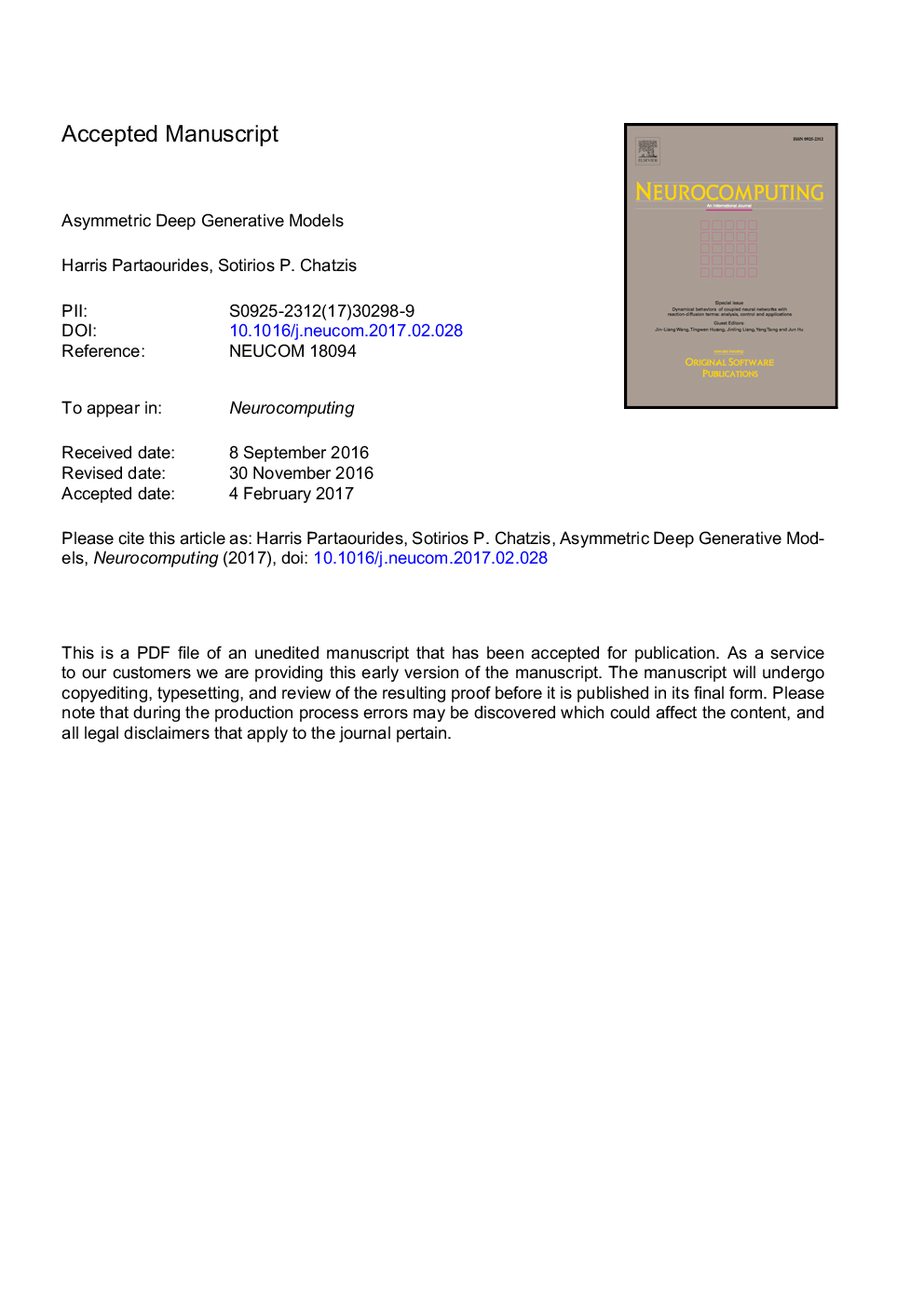| Article ID | Journal | Published Year | Pages | File Type |
|---|---|---|---|---|
| 4947562 | Neurocomputing | 2017 | 18 Pages |
Abstract
Amortized variational inference, whereby the inferred latent variable posterior distributions are parameterized by means of neural network functions, has invigorated a new wave of innovation in the field of generative latent variable modeling, giving rise to the family of deep generative models (DGMs). Existing DGM formulations are based on the assumption of a symmetric Gaussian posterior over the model latent variables. This assumption, although mathematically convenient, can be well-expected to undermine the eventually obtained representation power, as it imposes apparent expressiveness limitations. Indeed, it has been recently shown that even some moderate increase in the latent variable posterior expressiveness, obtained by introducing an additional level of dependencies upon auxiliary (Gaussian) latent variables, can result in significant performance improvements in the context of semi-supervised learning tasks. Inspired from these advances, in this paper we examine whether a more potent increase in the expressiveness and representation power of modern DGMs can be achieved by completely relaxing their typical symmetric (Gaussian) latent variable posterior assumptions: Specifically, we consider DGMs with asymmetric posteriors, formulated as restricted multivariate skew-Normal (rMSN) distributions. We derive an efficient amortized variational inference algorithm for the proposed model, and exhibit its superiority over the current state-of-the-art in several semi-supervised learning benchmarks.
Related Topics
Physical Sciences and Engineering
Computer Science
Artificial Intelligence
Authors
Harris Partaourides, Sotirios P. Chatzis,
